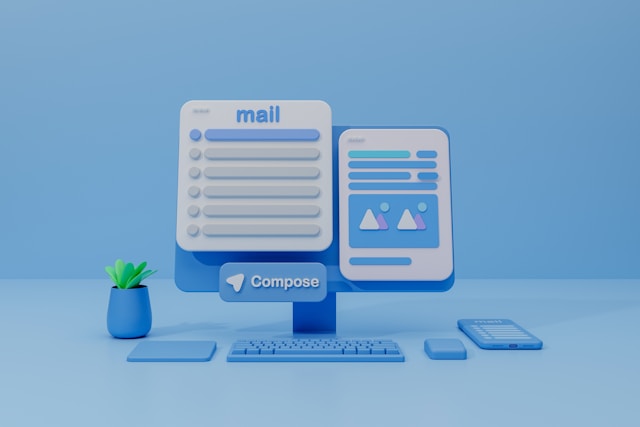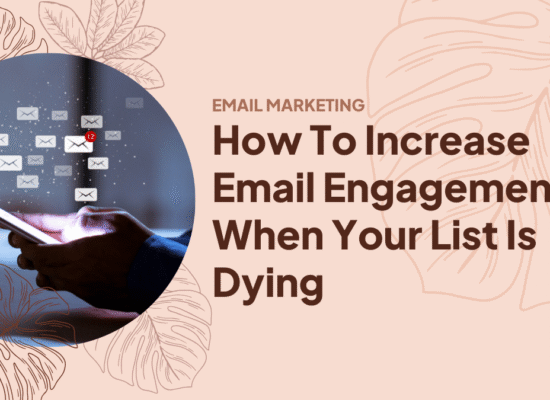Table of Contents
Have you ever experienced that sinking feeling when you discover an important email from your bank, a job opportunity, or a time-sensitive offer buried deep in your spam folder? Or perhaps you’re on the other side—a business owner who’s spent hours crafting the perfect email campaign only to see dismal open rates and a flood of bouncebacks?
In our increasingly digital world, email remains the backbone of professional communication and marketing. Yet, the reliability of this channel faces a significant threat: invalid emails. These seemingly innocent strings of characters cost businesses worldwide an estimated $16.5 billion annually in wasted marketing spend, lost opportunities, and damaged sender reputations.
Email verification is the unsung hero in this digital communication landscape—a crucial yet often overlooked process that ensures your messages reach real people with active inboxes. Think of it as the quality control checkpoint for your contact list, sifting through the noise to establish genuine connections.
This article is for everyone who relies on email—whether you’re a marketing professional managing large campaigns, a small business owner nurturing customer relationships, or simply someone who wants to understand why some messages never reach their destination. By the end, you’ll have a clear understanding of what email verification is, how it works, and why it matters to your digital communication success.
What is Email Verification?
Email verification is the systematic process of confirming that an email address is valid, deliverable, and safe to send to. It’s essentially a quality assurance check for email addresses, ensuring they’re correctly formatted, connected to an actual domain, and linked to an active mailbox that can receive messages.
When I first ventured into email marketing, I naively assumed that if someone typed their email into a form, it must be correct and operational. I quickly learned this wasn’t the case—typos happen, people enter fake addresses, and once-valid emails become abandoned over time. This is where verification steps in to save the day.
At a technical level, email verification works through a series of checks that progressively dig deeper into an email address’s validity. The verification system communicates with email servers, checking various aspects without actually sending a test email (in most cases). Think of it as knocking on a door to see if anyone’s home, rather than barging in.
The process typically includes several methods:
- Syntax validation examines whether the email follows the correct format (username@domain.com). It catches obvious errors like missing @ symbols or impossible character combinations. It’s the first line of defense against clearly invalid addresses.
- Domain validation verifies if the domain part of the email (everything after the @ symbol) actually exists and has valid mail exchange (MX) records—essentially checking if the email server is operational. If someone types “@gmial.com” instead of “@gmail.com,” domain validation would flag this error.
- Mailbox validation goes a step further by communicating with the email server to confirm if the specific username exists on that domain. This is like calling a company’s reception to ask if a specific person works there.
- Catch-all detection identifies domains configured to accept all emails regardless of whether the username exists. These “catch-all” domains can mask invalid addresses because they won’t immediately bounce, but they rarely represent engaged recipients.
To use a real-world analogy: email verification is like a postal worker checking that a physical letter has the correct address format, confirming the street exists on a map, verifying the specific house number exists on that street, and finally checking if anyone actually lives there to receive mail. It’s thorough, systematic, and vital for successful delivery.
Whose Email is This? Understanding the Importance of Authentication
Have you ever received an email and wondered, “Whose email is this really from?” You’re not alone. In our current digital landscape, where phishing scams and fraudulent communications proliferate, this question has never been more pertinent.
The problem of unknown or suspicious senders creates a significant challenge for legitimate email communications. According to recent studies, approximately 3.4 billion phishing emails are sent globally every day. This flood of suspicious messages has trained recipients to be skeptical about emails from unfamiliar addresses, which directly impacts open rates and engagement for legitimate senders.

Email verification helps address this trust deficit in several ways. First, it establishes that the sender is using a legitimate, functioning email address—a basic indicator of authenticity. But verification goes beyond simple validity checks to support the broader ecosystem of email authentication.
There’s an important relationship between verification and authentication protocols like SPF (Sender Policy Framework), DKIM (DomainKeys Identified Mail), and DMARC (Domain-based Message Authentication, Reporting & Conformance). While verification confirms an email address exists, these authentication protocols verify that an email actually comes from who it claims to come from, preventing email spoofing and increasing delivery rates.
When I work with clients to improve their email deliverability, I often explain that verification and authentication are complementary tools in the trust-building arsenal. Verification ensures you’re reaching real inboxes, while authentication ensures recipients’ email providers recognize you as a legitimate sender.
Today’s email users have become increasingly cautious about engaging with messages from unknown senders. This caution stems from years of exposure to spam, phishing attempts, and data breaches. Major email providers like Gmail and Outlook have responded by implementing increasingly sophisticated filtering algorithms that prioritize authenticated senders with good reputations.
For businesses and individuals alike, this means a verified, authenticated approach to email is no longer optional—it’s essential for maintaining the trust and attention of your audience in an increasingly skeptical digital world.
Email Verification Benefits You Need to Know
The journey through email verification isn’t just a technical checkbox—it’s a pathway to tangible benefits that transform how we communicate online. Having spent years navigating the complex landscape of digital marketing, I’ve witnessed firsthand how proper email verification creates ripple effects of positive outcomes for both individuals and businesses.
For individuals, email verification benefits extend far beyond the inbox. When you engage with platforms and businesses that prioritize verification, you’ll notice a significant reduction in spam and phishing attempts reaching your primary inbox. This isn’t just about convenience—it’s about security. I remember the relief on a friend’s face when she realized verification tools could have prevented her elderly father from falling victim to a sophisticated phishing scam that cost him thousands.

Your inbox organization improves naturally when verification systems filter out suspicious senders. Rather than wading through dozens of irrelevant messages, you receive communications that matter. This saved time adds up substantially over weeks and months.
Perhaps most importantly, robust verification protects your personal information. When businesses verify email authenticity, they’re less likely to send sensitive information to compromised or incorrect addresses. This creates a more secure communication environment where your data remains in the right hands.
For businesses, the benefits of implementing what is email verification are even more pronounced. Higher deliverability rates stand at the forefront—your messages actually reach intended recipients instead of bouncing or landing in spam folders. A client of mine saw their deliverability jump from 76% to 94% after implementing verification, instantly amplifying their voice.

Your sender reputation—that invisible score that email providers use to judge your communications—improves dramatically with verification. Clean sending practices signal to Gmail, Outlook, and others that you’re a trustworthy sender deserving of inbox placement.
Reduced bounce rates follow naturally, preventing the sender reputation damage that occurs when emails hit invalid addresses. For marketing teams, this translates to more accurate performance metrics and better campaign evaluation.
The financial aspect is compelling too. By eliminating wasted sends to non-existent addresses, businesses save on email service provider costs while simultaneously improving campaign effectiveness. One e-commerce company I worked with calculated annual savings of over $15,000 through verification alone.
Data quality, the foundation of effective marketing, sees remarkable improvement. When each contact represents a real, engaged person, your entire marketing ecosystem benefits from more accurate segmentation, personalization, and analysis.
Email Verification and GDPR Compliance
Navigating the regulatory landscape of email marketing has become increasingly complex since the General Data Protection Regulation (GDPR) took effect in 2018. As someone who’s guided multiple organizations through compliance transitions, I’ve seen how email verification serves as an essential bridge between marketing objectives and regulatory requirements.
Email verification and GDPR compliance share a fundamental principle: respect for data accuracy and individual rights. The GDPR explicitly requires that personal data be “accurate and, where necessary, kept up to date,” with companies taking “every reasonable step” to ensure inaccurate data is erased or rectified. This is precisely what verification accomplishes—identifying and remediating inaccurate email data.
When examining key GDPR requirements, several aspects directly connect to verification processes. Article 5’s principles relating to data minimization and accuracy are supported when verification eliminates invalid addresses. Article 25’s “data protection by design” obligation is partially satisfied when verification becomes an integrated element of data collection.

Consent verification represents another critical intersection. Under GDPR, consent must be freely given, specific, informed, and unambiguous. Email verification helps confirm that the person providing consent is reachable at the address given—an important step in documenting valid consent. During a compliance audit for a retail client, this verification documentation proved invaluable in demonstrating due diligence.
The “right to be forgotten” (Article 17) gains practical support through verification as well. When individuals exercise this right, verification helps ensure the correct records are identified and completely removed. Without verification, organizations risk incomplete data deletion or accidentally removing the wrong records—both potential compliance violations.
Beyond Europe’s GDPR, international considerations include California’s CCPA, Brazil’s LGPD, and Canada’s CASL, among others. While requirements vary, email verification supports compliance with most data protection frameworks by maintaining accurate records and respecting individual communication preferences.
Email Verification for Improved Customer Acquisition
The path to sustainable customer acquisition begins with quality connections. Throughout my years in digital marketing, I’ve observed that sophisticated organizations don’t just focus on acquiring more leads—they prioritize acquiring the right leads. This is where email verification becomes a powerful catalyst in your customer acquisition strategy.
Email verification supports lead generation by ensuring that each potential customer entering your ecosystem represents a genuine opportunity. When implementing verification for a SaaS startup, we discovered that nearly 18% of their form submissions contained invalid emails—representing wasted follow-up efforts and skewed performance metrics. By verifying emails at the point of capture, their sales team could focus exclusively on legitimate prospects.
Building quality contact lists from the start creates compound benefits. Rather than accumulating questionable contacts and periodically “cleaning” your list, verification implements quality control at the entry point. This proactive approach prevents database contamination and establishes a foundation of trust with new contacts.

The impact on conversion rates tells a compelling story. When comparing verified versus unverified segments in A/B tests, I consistently see higher engagement metrics across verified cohorts. One e-commerce client experienced a 23% increase in conversion rates after implementing verification, simply because their messages reached engaged, real individuals.
ROI statistics around verification are consistently impressive. Industry benchmarks suggest that for every dollar invested in email verification, companies recoup $32-$42 in prevented waste and improved campaign performance. My experience confirms this range is realistic, with most organizations breaking even within their first campaign after implementation.
For those serious about optimizing their customer acquisition funnel, email verification isn’t just a technical consideration—it’s a strategic advantage that improves every subsequent marketing effort.
Email Verification Tools and Implementation
Finding the right email verification solution is like selecting the perfect instrument for an orchestra—it must harmonize with your existing systems while performing its specialized function flawlessly. Having guided numerous organizations through this selection process, I’ve developed a nuanced understanding of what works for different scenarios.
The landscape of verification tools has evolved dramatically in recent years, with options ranging from simple API integrations to comprehensive email hygiene platforms. These tools generally fall into three categories: real-time verification (validating emails at the point of collection), bulk verification (cleaning existing lists), and integrated solutions that combine both approaches with additional features like spam trap detection and typo correction.

Bouncer is one such solution that offers both real-time and bulk verification capabilities. What makes it particularly noteworthy is its balance of thoroughness and speed—something I’ve found valuable when working with clients who need both accuracy and efficiency. Their approach to analyzing email validity without triggering spam filters represents the kind of thoughtful design that elevates a technical tool to a strategic asset.
When considering DIY versus professional solutions, I often draw from personal experience. Early in my career, I attempted a homegrown verification system using open-source libraries. While educational, this approach ultimately consumed far more resources than a professional solution would have cost, with less reliable results. For most organizations, professional verification tools deliver superior ROI through better accuracy, compliance support, and time savings.
Implementation best practices begin with clear objectives. Are you primarily concerned with what is email verification for customer acquisition, improving deliverability, or GDPR compliance? Your priorities will guide configuration decisions. Start with a small test batch before full implementation, establish baseline metrics to measure improvement, and create clear processes for handling verification results.
Integration with existing systems represents the final piece of the puzzle. Most modern verification tools offer seamless connections with CRMs, email service providers, and form builders through APIs or direct integrations. I’ve found that successful implementations involve not just IT but also marketing and compliance stakeholders to ensure the solution addresses cross-functional needs.
Common Email Verification Challenges and Solutions
The journey through email verification isn’t always smooth sailing. Throughout my years implementing these systems across various industries, I’ve encountered recurring challenges that require thoughtful solutions. Let me share these insights in a more digestible format:

Dealing with temporary failures:
- Challenge: Email servers experience downtime that triggers false negatives
- Personal insight: I once watched a client nearly abandon a campaign to their most loyal customers due to temporary verification issues
- Solution: Implement a multi-step verification process with a 24-48 hour retry window
- Pro tip: Flag these addresses distinctly in your system rather than immediately discarding them
Handling catch-all domains:
- Challenge: These domains accept all emails regardless of actual address existence
- Technical approach: Look for verification tools that assign confidence scores rather than binary valid/invalid designations
- Strategic decision: Create tiered marketing approaches based on verification confidence levels
- Risk management: Consider sending lower-volume, high-value communications to these addresses first to test engagement
Role-based email considerations:
- Challenge: Addresses like info@, support@, or sales@ represent departments, not individuals
- Engagement reality: These typically yield lower engagement and higher complaint rates
- Recommended approach: Separate these from personal addresses in your marketing strategy
- Best use: Reserve for transactional or service-related communications rather than promotional content
Balancing thoroughness with efficiency:
- Challenge: Complete verification processes can be time-consuming for large databases
- Pragmatic solution: Prioritize verification for new contacts and high-value segments first
- Resource management: Implement a staged approach that delivers immediate benefits where they matter most
- Measurable impact: One client saw a 31% improvement in deliverability by just focusing on their active segments first
Maintaining verification over time:
- Challenge: Email addresses that were valid yesterday may become invalid tomorrow
- Data decay reality: Studies show B2B email databases degrade by about 22.5% annually
- Sustainability approach: Implement regular re-verification cycles (typically quarterly for active segments)
- Long-term strategy: Build verification into your regular data maintenance workflows rather than treating it as a one-time project
Through addressing these challenges systematically, what begins as potential roadblocks can transform into opportunities for refining your entire email ecosystem.
Conclusion: The Verified Path Forward
In my decade-plus journey through digital marketing’s evolving landscape, I’ve watched email verification transform from a technical afterthought to a strategic imperative. What is email verification, at its core? It’s the invisible foundation that supports every successful email marketing effort—the quiet guardian that protects your communication channels from the chaos of invalid data and missed connections.
I still remember the client who scoffed at verification as “unnecessary overhead” until we quantified what they were losing: 23% of marketing budget wasted on non-existent recipients, countless hours of sales follow-up to phantom leads, and immeasurable damage to their sending reputation. Their perspective shifted dramatically once they experienced verification not as a cost, but as an investment with measurable returns.
The question isn’t whether you can afford to implement email verification—it’s whether you can afford not to. Sophisticated spam filters, and elevated customer expectations, verification has evolved from optional to essential. It stands as the crucial first step in building meaningful digital relationships.
As you contemplate your next steps, remember that verification isn’t merely about cleaning data—it’s about creating clarity, establishing trust, and opening pathways to genuine connection in an increasingly digital world.
Key Takeaways
- Email verification serves as both shield and bridge — protecting your sender reputation while creating pathways to meaningful customer connections that convert at higher rates.
- Implementation doesn’t require technical expertise — modern verification tools integrate seamlessly with existing systems, making adoption straightforward for businesses of any size.
- The ROI extends beyond deliverability — verification impacts everything from GDPR compliance to customer acquisition costs, creating compounding benefits across your entire marketing ecosystem.
Ready to Transform Your Email Communication?
Frequently Asked Questions
Is email verification a one-time process or ongoing?
Email verification works best as an ongoing practice rather than a single event. While bulk verification cleans your existing database, implementing real-time verification at collection points prevents new invalid addresses from entering your system. Ideally, combine both approaches with quarterly re-verification of your most active segments.
How does verification impact customer experience?
When implemented thoughtfully, verification actually enhances customer experience by preventing frustrating scenarios like missing important communications, needing to re-submit information, or experiencing delays in service. Real-time verification can even correct common typos (like “gmial.com”), saving customers from their own minor mistakes.
Will email verification eliminate all bounces and delivery issues?
Even perfect verification can’t prevent all delivery challenges—emails change status, inbox providers update algorithms, and technical issues occur. What verification does provide is significant reduction in hard bounces (typically 98%+) and substantial improvement in overall deliverability (20-40% in most cases). Think of it as dramatically improving your odds rather than guaranteeing perfection.
Maria is an accomplished digital marketing professional, specializing in content marketing and SEO. She's a neurodivergent who strives to raise awareness, and overcome the stigma that envelopes around mental health.






